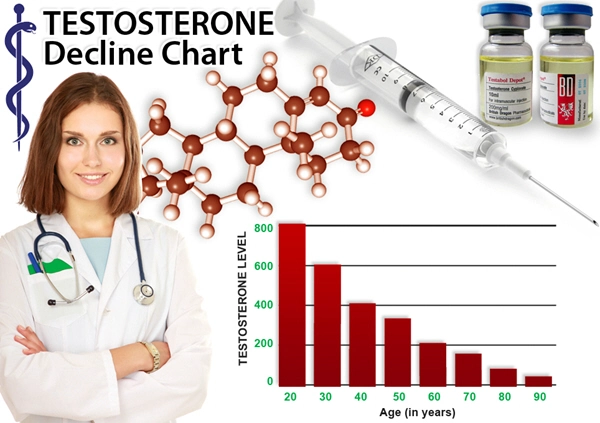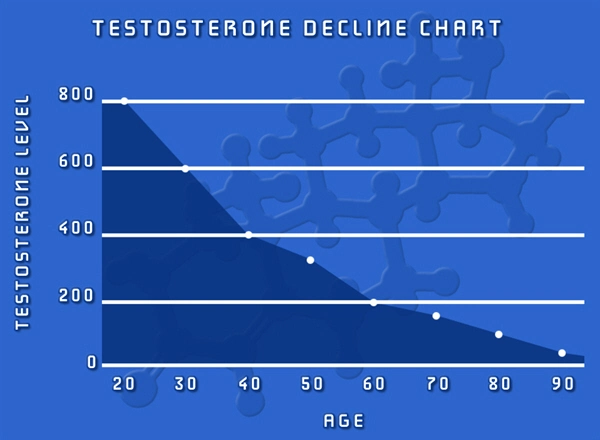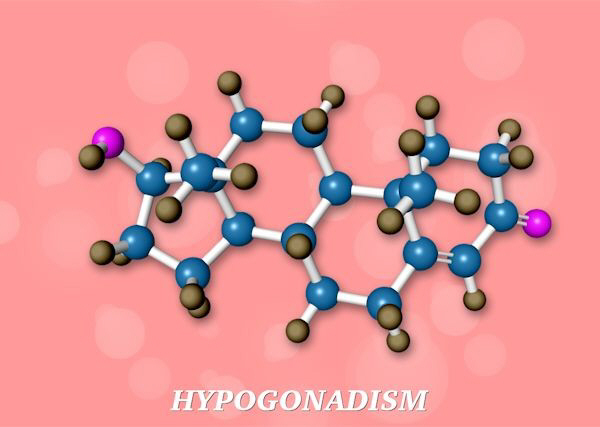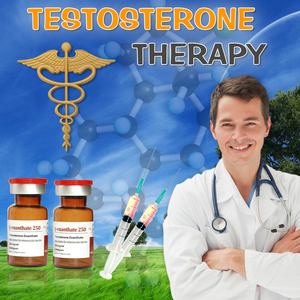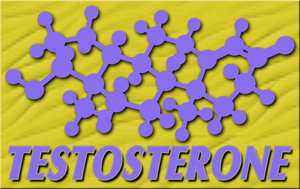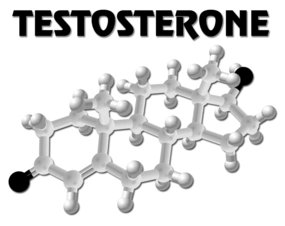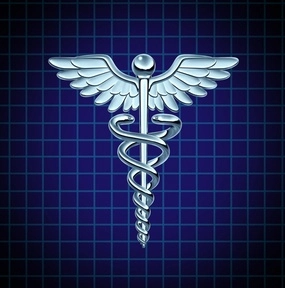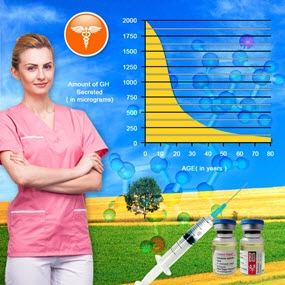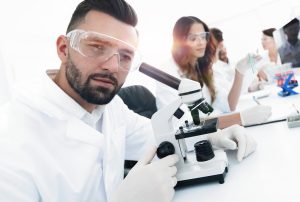 Sounds scary, doesn't it? That's because it is! Hypotestosteronism is another word for hypogonadism, or low testosterone – a diagnosis that no man wants to hear! Besides the physical impacts of low testosterone on a man, low testosterone can lead to severe depression and low self-esteem – left undiagnosed, severe depression can cause one to act on suicidal thoughts. Despite what some people say about low testosterone, it can be a serious diagnosis. Learn more about this, unfortunately increasing in the U.S. population, deficiency below.
Sounds scary, doesn't it? That's because it is! Hypotestosteronism is another word for hypogonadism, or low testosterone – a diagnosis that no man wants to hear! Besides the physical impacts of low testosterone on a man, low testosterone can lead to severe depression and low self-esteem – left undiagnosed, severe depression can cause one to act on suicidal thoughts. Despite what some people say about low testosterone, it can be a serious diagnosis. Learn more about this, unfortunately increasing in the U.S. population, deficiency below.
Video Link: https://vimeo.com/431055652
Video Download: Click Here To Download Video
Video Stream: Click Here To Stream Video
What is Hypotestosteronism?
Hypotestosteronism occurs with the decreased functionality of the gonads – ovaries in women and testes in men. Both men and women produce the hormone testosterone, but men produce much more of it than women do, leading to their secondary sex characteristics such as facial hair and deeper voice. Without testosterone, boys would not develop properly during puberty and lead to the absence of several or all secondary sex characteristics.
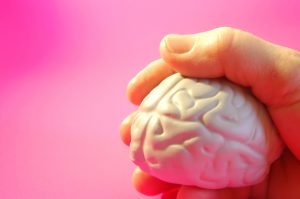 The brain is where the production of testosterone begins, specifically the cerebral cortex. The cortex signals the hypothalamus which in turn stimulates the pituitary gland. The pituitary gland is one important organ, located beneath the brain, and dubbed the “master gland.” It releases many different hormones that regulate such critical functions as growth regulation, blood pressure, ovulation and functioning of the thyroid.
The brain is where the production of testosterone begins, specifically the cerebral cortex. The cortex signals the hypothalamus which in turn stimulates the pituitary gland. The pituitary gland is one important organ, located beneath the brain, and dubbed the “master gland.” It releases many different hormones that regulate such critical functions as growth regulation, blood pressure, ovulation and functioning of the thyroid.
In terms of testosterone production, the pituitary gland, once stimulated by the hypothalamus, releases follicle-stimulating hormone (FSH) and luteinizing hormone (LH). These hormones trigger cells in the testes to convert cholesterol into testosterone. Now that we understand the basic physiology behind the production of testosterone in men, what happens when men do not produce enough??
Symptoms of Hypotestosteronism
The best way to tell if your testosterone levels are low is with a simple blood test. If the serum testosterone levels are below 300 ng/dL, this is considered low testosterone. Usually, at this concentration, a man will experience at least one symptom of low testosterone. Symptoms include:
- lack of or regression of secondary sex characteristics: when a boy going through puberty does not develop properly with typical male characteristics such as growth of facial hair, deepening of the voice and/or muscle growth
- reduced muscle mass: testosterone plays a major role in muscle development and a noticeable decrease in muscle mass is a common symptom of hypotestosteronism
- belly fat: A man's waist size can be the strongest predictor of low testosterone levels and this symptom follows the reduced muscle mass one. Without lean muscle mass, the belly fat piles on. Increased fat also promotes the conversion of testosterone to estrogen, thus perpetuating the cycle of low-T.
- erectile dysfunction: Another major symptom of hypotestosteronism. Adequate levels of testosterone are necessary for healthy erections.
- diminished penile sensation: Testosterone is a sex hormone and without it, men will not experience sex like they used to. Couple this with erectile dysfunction and one's sex life is non-existent.
- fatigue: Testosterone regulates vitality in men, maintaining a steady metabolism and boosting athletic performance. The fatigue experienced by hypotestosteronism patients is typically chronic in nature.
- depression: One of the more serious symptoms of hypotestosteronism as it can lead to self-harm or suicidal thoughts/actions. Many men who suffer from low-T report "just not feeling like themselves" and some of these psychological issues may stem from the other unwanted symptoms such as weight gain or erectile dysfunction. Keep on the look out for this important symptom!
- brain fog: Testosterone plays an important role in several functions of the brain, including memory. "Brain fog" could refer to general confusion, difficulty concentrating on work or even not being able to follow directions without becoming muddled. It can stem from hormonal imbalance and interestingly, have found that men with mild cognitive impairments were able to improve their verbal fluency, spatial scores, spatial memory and other brain functions after undergoing TRT.
- hot flashes: Another symptom of hormonal imbalance and not just from low testosterone -- women experience these when going through menopause as well. Another term for this is "night sweats."
- difficulty achieving orgasm: Another symptom linked to erectile dysfunction and decreased penile sensation. The overall physical sensation and reaction to sexual stimuli is reduced in low-T sufferers.
- Memory problems: Testosterone plays a role in memory, as well as other brain functions as mentioned previously and without adequate levels, the brain suffers resulting in increased confusion and "brain fog."
- Feelings of insecurity: A psychological issue stemming from hormonal imbalance and increased feelings of depression.
- Feeling sad for no reason: The first sign of depression in men with low testosterone. If there is nothing in your life that you can point to that is making you upset or sad, the likely culprit is a hormonal imbalance -- most likely hypotestosteronism in men.
There are other symptoms but these are the more common ones experienced by low-t sufferers. Early detection of these symptoms, or regular blood tests, can catch the disease early on and avoid getting to the point of severe depression, other psychological issues such as brain fog or difficulty concentrating or the development of osteoporosis. As men age, the risk and prevalence of this disease increases. Many middle-aged men and older suffer from hypogonadism and do not even know it. They just think that their ED or chronic fatigue is a normal part of aging — it doesn't have to be!
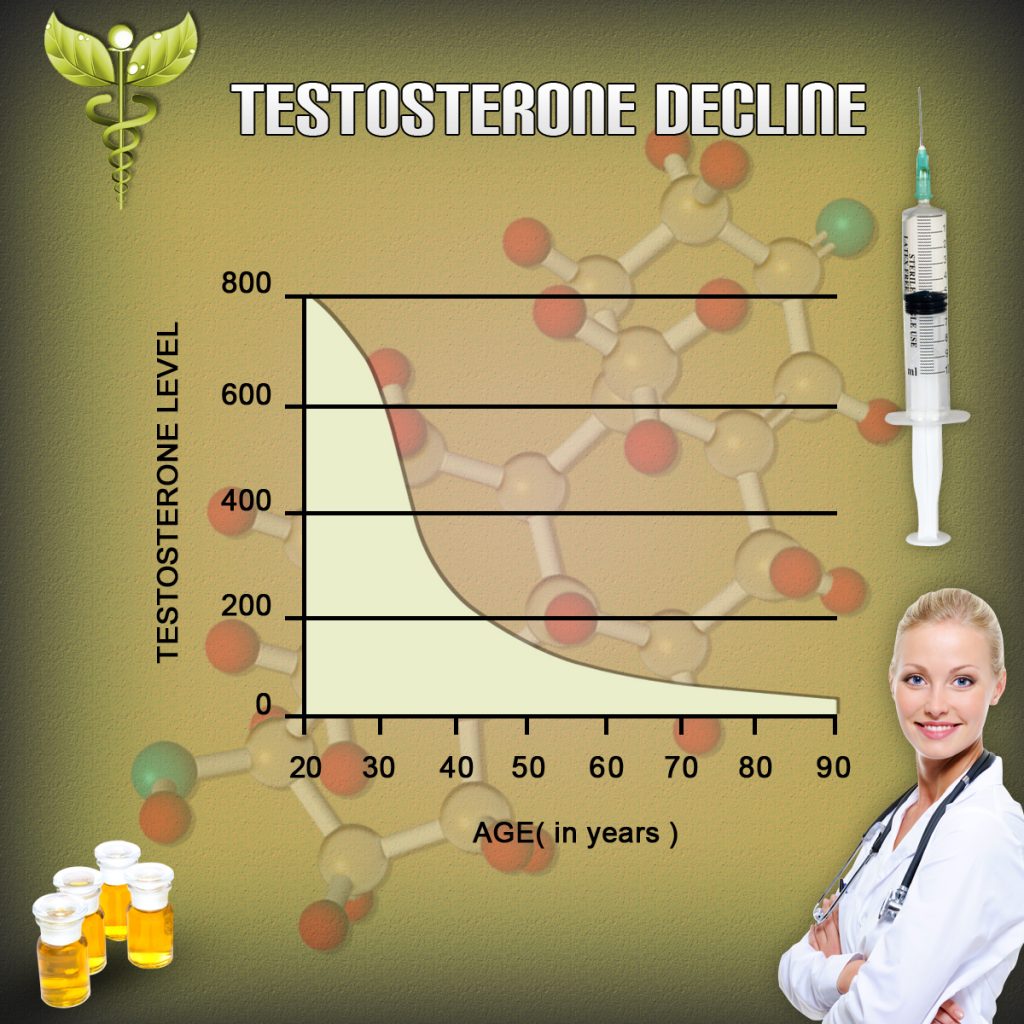
Treatment Options for Hypotestosteronism
The most effective treatment option for men suffering from hypogonadism is testosterone replacement therapy (TRT). The goal is to bring the level back up within the range of 300 to 800 ng/dL. The other goals of TRT, per the American Association of Clinical Endocrinologists, are to restore sexual function, prevent osteoporosis, normalize growth hormone levels, lower the risk of heart disease and maintain virilization (maintaining male characteristics such as body hair, muscle mass and a deep voice).
 TRT involves the use of intramuscular injections, topical testosterone gels or creams, transdermal patches and/or testosterone pellets. Which option is best for you needs to be discussed with your doctor or endocrinologist.
TRT involves the use of intramuscular injections, topical testosterone gels or creams, transdermal patches and/or testosterone pellets. Which option is best for you needs to be discussed with your doctor or endocrinologist.
At our clinic, we offer advice from some of the leading and most knowledgeable endocrinologists in the United States. If you feel that some of your “aging” symptoms are caused by more than just aging or you want to get tested for low testosterone, simply contact one of our hormone advisors by calling the number at the top of this webpage or filling out the contact form in the upper right. It's so easy to get started NOW!
Contact Us Today For A Free Consultation

- Low Testosterone Treatments - Video [Last Updated On: December 21st, 2024] [Originally Added On: July 12th, 2012]
- Treating low testosterone - Video [Last Updated On: December 21st, 2024] [Originally Added On: July 12th, 2012]
- Fatigue and Low Testosterone part 2 - Video [Last Updated On: December 22nd, 2024] [Originally Added On: July 12th, 2012]
- Fatigue and Low Testosterone part 1 - Video [Last Updated On: December 22nd, 2024] [Originally Added On: July 12th, 2012]
- Nation + World [Last Updated On: January 22nd, 2018] [Originally Added On: September 10th, 2012]
- Natural Remedies - Natural Way to Promote Healthy Vitality in Men. [Last Updated On: May 4th, 2015] [Originally Added On: October 6th, 2012]
- ‘Horrendous’ Study Shows Obese Teen Boys Face Impotence and Infertility [Last Updated On: January 11th, 2018] [Originally Added On: October 17th, 2012]
- Symptoms of Low Testosterone Levels in Men - Video [Last Updated On: January 6th, 2025] [Originally Added On: November 2nd, 2012]
- Symptoms of Low Testosterone Levels with Dr. Alexander - Video [Last Updated On: January 6th, 2025] [Originally Added On: November 2nd, 2012]
- Bio-Identical Hormone Therapy [Last Updated On: January 7th, 2025] [Originally Added On: November 2nd, 2012]
- Low Testosterone and Male Fertility - Video [Last Updated On: January 7th, 2025] [Originally Added On: November 2nd, 2012]
- He's the one they call Dr Feel Good! - Video [Last Updated On: January 8th, 2025] [Originally Added On: November 2nd, 2012]
- Get the down low on Low T - Video [Last Updated On: January 8th, 2025] [Originally Added On: November 2nd, 2012]
- Low Testosterone Quiz - Video [Last Updated On: January 9th, 2025] [Originally Added On: November 2nd, 2012]
- Female sex-enhancing nasal spray undergoing clinical trials [Last Updated On: October 24th, 2015] [Originally Added On: November 2nd, 2012]
- More Men Suffering from Low Testosterone [Last Updated On: May 4th, 2015] [Originally Added On: November 7th, 2012]
- obese men lose weight with testosterone - Video [Last Updated On: January 23rd, 2025] [Originally Added On: November 7th, 2012]
- Bodybuilding Tip Testosterone Boosters to Build Muscle Do They Work - Video [Last Updated On: January 24th, 2025] [Originally Added On: November 9th, 2012]
- Male Pattern Baldness - Video [Last Updated On: January 27th, 2025] [Originally Added On: November 12th, 2012]
- Bio-Identical Hormone Replacement Men and/or Women - Video [Last Updated On: February 3rd, 2025] [Originally Added On: November 22nd, 2012]
- LEARNING ABOUT TESTOSTERONE LEVELS - Video [Last Updated On: February 4th, 2025] [Originally Added On: November 22nd, 2012]
- Salivary diagnostics [Last Updated On: February 11th, 2025] [Originally Added On: December 4th, 2012]
- Natural Hormone Repalcement Therapy [Last Updated On: February 19th, 2025] [Originally Added On: December 10th, 2012]
- Why You Should Help Others Fight -Major Depression, Anxiety, Depersonalization, Low Testosterone- - Video [Last Updated On: January 7th, 2013] [Originally Added On: January 7th, 2013]
- Effects Of Low Testosterone | Low T Hormones - Video [Last Updated On: February 14th, 2013] [Originally Added On: February 14th, 2013]
- Go7Herbal Why Men Are Having Low Testosterone And High Estrogen - Video [Last Updated On: February 18th, 2013] [Originally Added On: February 18th, 2013]
- Vegan Blood Test - I'm Diabetic, Obese, and Low Testosterone - Video [Last Updated On: February 23rd, 2013] [Originally Added On: February 23rd, 2013]
- Vegan for 12 years. Diabetic, Obese, Low Testosterone, Hyperkalemic and out of shape? - Video [Last Updated On: February 26th, 2013] [Originally Added On: February 26th, 2013]
- Low testosterone in men-Have your testosterone checked for free. See below for details. - Video [Last Updated On: March 7th, 2013] [Originally Added On: March 7th, 2013]
- Low Testosterone (Lunch with the Doctor) February 2013 - Video [Last Updated On: March 8th, 2013] [Originally Added On: March 8th, 2013]
- Being aware of low testosterone - Video [Last Updated On: March 23rd, 2013] [Originally Added On: March 23rd, 2013]
- Low Testosterone, or so I thought. - Video [Last Updated On: April 9th, 2013] [Originally Added On: April 9th, 2013]
- Haas Psychiatric Wellness - Low Testosterone - Video [Last Updated On: April 20th, 2013] [Originally Added On: April 20th, 2013]
- low testosterone linked to future ra - Video [Last Updated On: May 19th, 2013] [Originally Added On: May 19th, 2013]
- www.YourTScore.com Importance of Testing for Low Testosterone by Dr. Tammy Tucker - Video [Last Updated On: May 24th, 2013] [Originally Added On: May 24th, 2013]
- Low testosterone= Low Sex Drive - Video [Last Updated On: June 15th, 2013] [Originally Added On: June 15th, 2013]
- The Chicken or the Egg: Which Comes First, Diabetes or Low Testosterone in Men? - Video [Last Updated On: July 2nd, 2013] [Originally Added On: July 2nd, 2013]
- Dr. DiPiazza Updates Low Testosterone - Video [Last Updated On: July 8th, 2013] [Originally Added On: July 8th, 2013]
- About Low Testosterone and Treatment - Video [Last Updated On: July 16th, 2013] [Originally Added On: July 16th, 2013]
- SHC Video 12 Low Testosterone - Video [Last Updated On: July 18th, 2013] [Originally Added On: July 18th, 2013]
- Anti Aging Costa Rica - What is LowT? ( What is Low Testosterone? ) and Anti-Aging Costa Rica - Video [Last Updated On: May 4th, 2015] [Originally Added On: July 18th, 2013]
- The Doctor is In: Low testosterone - Video [Last Updated On: July 28th, 2013] [Originally Added On: July 28th, 2013]
- How Is Low T Or Low Testosterone Diagnosed? By Low T Expert Dr David Asher In Orange County CA - Video [Last Updated On: August 7th, 2013] [Originally Added On: August 7th, 2013]
- Low T Or Low Testosterone Introduction By Low T Expert Dr David Asher MD in Anaheim - Video [Last Updated On: August 7th, 2013] [Originally Added On: August 7th, 2013]
- Low T Or Low Testosterone Quiz With Dr David Asher MD in Anaheim OC Orange County - Video [Last Updated On: August 7th, 2013] [Originally Added On: August 7th, 2013]
- Low T Quiz With Low Testosterone Expert Dr David Asher MD in Anaheim CA VIDEO - Video [Last Updated On: August 10th, 2013] [Originally Added On: August 10th, 2013]
- Diet soda vs. regular; low testosterone: Healthy Living [Last Updated On: August 14th, 2013] [Originally Added On: August 14th, 2013]
- Natural Cure For Low Testosterone Helps To Boost Health And Vitality - Video [Last Updated On: August 18th, 2013] [Originally Added On: August 18th, 2013]
- Natural Herbal Remedies For Low Testosterone Help To Improve Sex Drive In Men - Video [Last Updated On: August 18th, 2013] [Originally Added On: August 18th, 2013]
- Build up your keywords low testosterone, Tyler-Longview Texas - Video [Last Updated On: September 2nd, 2013] [Originally Added On: September 2nd, 2013]
- Build up your low testosterone, Tyler-Longview Texas - Video [Last Updated On: September 2nd, 2013] [Originally Added On: September 2nd, 2013]
- Low Testosterone - Clinical Research Study - Video [Last Updated On: September 6th, 2013] [Originally Added On: September 6th, 2013]
- low estrogen vs low testosterone in men - Video [Last Updated On: September 18th, 2013] [Originally Added On: September 18th, 2013]
- Low Testosterone Treatment with Frisco Family Physician Dr. Bradley Friedman - Video [Last Updated On: September 26th, 2013] [Originally Added On: September 26th, 2013]
- Herbs for low testosterone - Video [Last Updated On: October 4th, 2013] [Originally Added On: October 4th, 2013]
- Food Items To Treat Low Testosterone Problems - Video [Last Updated On: October 5th, 2013] [Originally Added On: October 5th, 2013]
- 5 Natural Ways To Treat Low Testosterone - Video [Last Updated On: October 8th, 2013] [Originally Added On: October 8th, 2013]
- How low testosterone could be deadly - Video [Last Updated On: October 23rd, 2013] [Originally Added On: October 23rd, 2013]
- Low T Treatment | Low Testosterone Treatments | Low Testosterone ... [Last Updated On: January 26th, 2018] [Originally Added On: November 2nd, 2013]
- Is it Low T | Signs, Symptoms, and what you can do about Low T [Last Updated On: December 7th, 2017] [Originally Added On: November 3rd, 2013]
- enVoqueMD talks low testosterone, how to increase levels - Video [Last Updated On: November 3rd, 2013] [Originally Added On: November 3rd, 2013]
- Low Testosterone Causes Fatigue - Video [Last Updated On: November 5th, 2013] [Originally Added On: November 5th, 2013]
- Something Every Man Needs to Know - Video [Last Updated On: November 6th, 2013] [Originally Added On: November 6th, 2013]
- Low Testosterone - WebMD: Symptoms, Health Effects, and ... [Last Updated On: December 2nd, 2017] [Originally Added On: November 12th, 2013]
- Low Testosterone (Low T) Levels in Men, Women, Symptoms - OnHealth [Last Updated On: December 1st, 2017] [Originally Added On: November 12th, 2013]
- Low Testosterone (Low T) Symptoms, Causes, and Treatment [Last Updated On: March 26th, 2020] [Originally Added On: November 12th, 2013]
- Low T Treatment | Low Testosterone Treatments | Low ... [Last Updated On: January 13th, 2018] [Originally Added On: November 18th, 2013]
- Is it Low Testosterone? [Last Updated On: January 5th, 2018] [Originally Added On: November 21st, 2013]
- Testosterone Pills For Men [Last Updated On: November 23rd, 2013] [Originally Added On: November 23rd, 2013]
- Testosterone: Indications, Side Effects, Warnings - Drugs.com [Last Updated On: December 28th, 2017] [Originally Added On: December 2nd, 2013]
- Low Testosterone (Low-T) Symptoms, Causes, Treatment - What ... [Last Updated On: December 3rd, 2017] [Originally Added On: December 3rd, 2013]
- Low Testosterone in Women - Video [Last Updated On: December 6th, 2013] [Originally Added On: December 6th, 2013]
- Quack Medicine? A Push to Sell Testosterone Gels Is Not Without Major Side Effects [Last Updated On: December 14th, 2013] [Originally Added On: December 14th, 2013]
- Gym Time - Video [Last Updated On: December 19th, 2013] [Originally Added On: December 19th, 2013]
- Low Testosterone and Your Health - WebMD Men's Health Center ... [Last Updated On: January 30th, 2018] [Originally Added On: December 21st, 2013]
- Low testosterone signs, symptoms and treatments Dr Sam Chawla by Test X180 Ignite - Video [Last Updated On: January 2nd, 2014] [Originally Added On: January 2nd, 2014]
- Low Testosterone Symptoms In Men - Video [Last Updated On: January 3rd, 2014] [Originally Added On: January 3rd, 2014]
- Hormone therapies help older adults find new life [Last Updated On: December 8th, 2017] [Originally Added On: January 8th, 2014]
- HORMONES DECREASE AS PEOPLE AGE, BUT REMEDIES HELP OLDER ADULTS FIND NEW LIFE [Last Updated On: January 10th, 2018] [Originally Added On: January 8th, 2014]
- Accumed Research Associates Featured On Katz's Corner 77 WABC Radio Show To Discuss Enlarged Prostate Treatment and ... [Last Updated On: January 7th, 2018] [Originally Added On: January 13th, 2014]
Word Count: 1093

